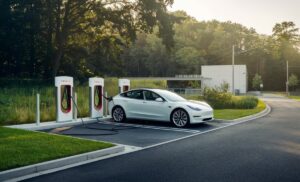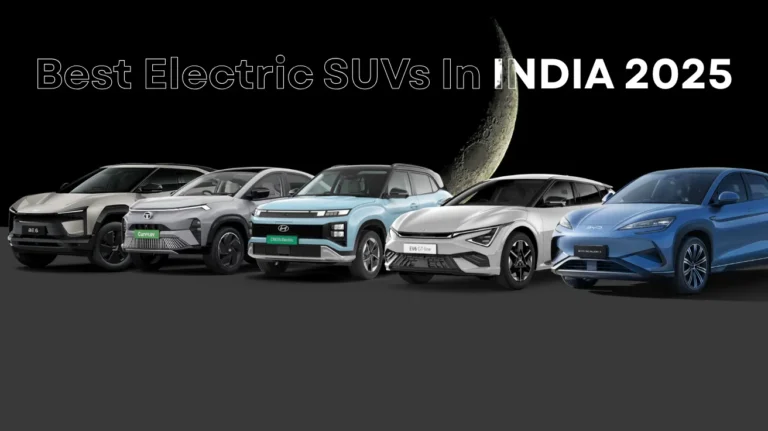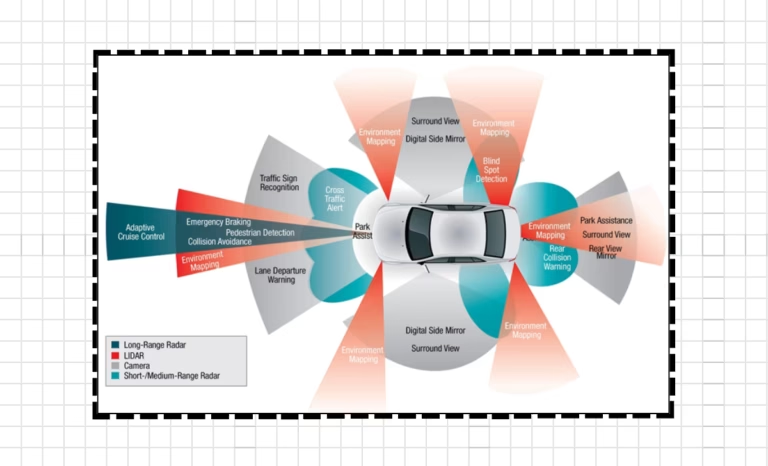Electric vehicles (EVs) are more than just a trend—they’re a revolution. But to make EVs a practical choice for everyone, we need a solid, widespread, and reliable infrastructure to support them. In this guide, we’ll explore everything you need to know about infrastructure for electric vehicles, breaking it down into easy-to-understand sections for anyone curious about the future of transportation.
In this article
- 1 Introduction to Electric Vehicle Infrastructure
- 2 What is EV Infrastructure?
- 3 Why EV Infrastructure Matters
- 4 Key Components of EV Infrastructure
- 5 Types of EV Charging Stations
- 6 Challenges in Building EV Infrastructure
- 7 Global Leaders in EV Infrastructure Development
- 8 EV Infrastructure in Urban Areas
- 9 Rural Challenges: EV Infrastructure in Remote Areas
- 10 Role of Renewable Energy in EV Infrastructure
- 11 Public vs. Private Investment in EV Infrastructure
- 12 Future Trends in EV Infrastructure
- 13 How to Advocate for Better EV Infrastructure Locally
- 14 The Road Ahead: A Vision for EV Infrastructure by 2030
- 15 FAQs About EV Infrastructure
Introduction to Electric Vehicle Infrastructure
Electric vehicles are hailed as the future of transportation, offering a cleaner, quieter, and more sustainable alternative to traditional gas-powered cars. However, owning an EV isn’t just about having the car—it’s about having the right support system to keep it running smoothly. That’s where EV infrastructure comes in.
The infrastructure for electric vehicles includes everything from charging stations to energy grids that power those chargers. Without it, EV adoption would be impossible. But with the right investments and innovations, we can create a network that makes owning an EV easy, convenient, and affordable.
What is EV Infrastructure?
EV infrastructure refers to the systems and facilities that support electric vehicle use. This includes:
- Charging Stations: Public and private locations where EV owners can recharge their vehicles.
- Battery Swapping Stations: Locations where EV batteries can be quickly swapped out for a fully charged one. While this model offers convenience, it is not yet widely adopted due to challenges such as the need for standardization of battery sizes and compatibility across different EV brands.
- Energy Grids: The electricity networks that supply power to charging stations.
- Software Platforms: Apps and systems that help drivers locate chargers, monitor charging, and pay for services.
This infrastructure bridges the gap between the vehicle and the energy it needs to run.
Why EV Infrastructure Matters
Investing in EV infrastructure isn’t just about convenience for EV owners—it’s about creating a better future for everyone. Here’s why it’s crucial:
- Environmental Benefits: More EVs mean fewer emissions, reducing air pollution and combating climate change.
- Economic Growth: Developing EV infrastructure creates jobs in the construction, technology, and energy sectors.
- Energy Independence: EVs reduce reliance on imported fossil fuels, making nations more self-sufficient.
- Improved Accessibility: A robust network ensures that EVs are a viable option for all, regardless of where they live.
Key Components of EV Infrastructure
Building EV infrastructure involves several key elements:
1. Charging Stations
Charging stations are the most visible part of EV infrastructure. These are classified into three main types:
- Level 1 Chargers: Use standard 120V outlets, suitable for home use but with slower charging speeds.
- Level 2 Chargers: Provide faster charging and are commonly found in public spaces and homes.
- DC Fast Chargers: Offer rapid charging, ideal for highways and long-distance travel.
2. Battery Swapping Facilities
An alternative to traditional charging, these facilities allow EV owners to replace a depleted battery with a fully charged one in minutes.
3. Energy Management Systems
These ensure efficient energy distribution to prevent overloading the grid while meeting the demands of EVs.
Types of EV Charging Stations
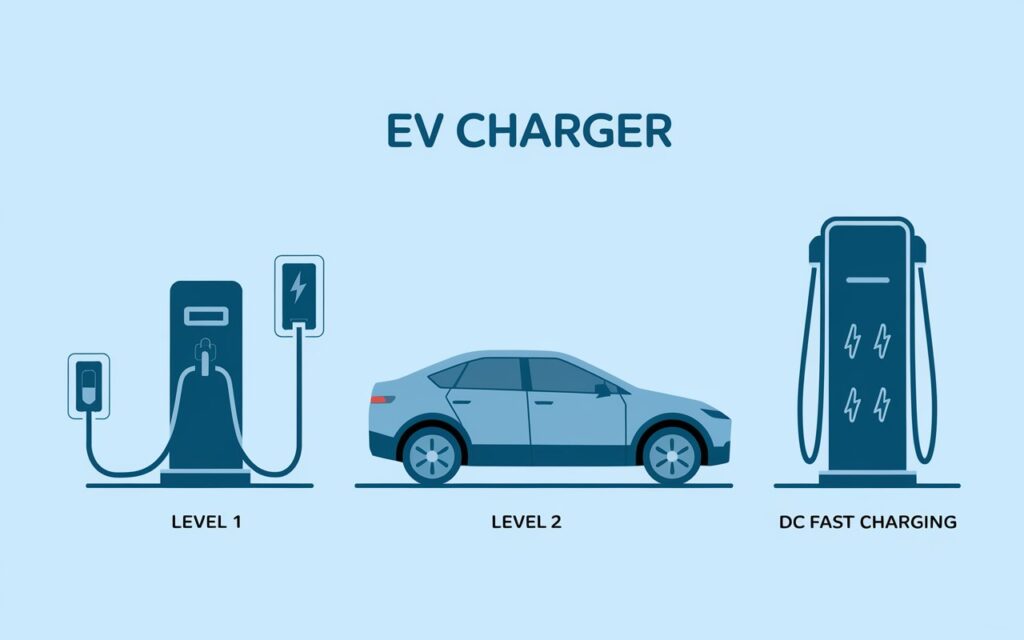
Charging stations are critical, but not all are created equal. Let’s break down the differences:
Level 1 Chargers
- Speed: Adds about 3-5 miles of range per hour.
- Best For: Overnight charging at home.
- Pros: Low cost and uses a standard outlet.
- Cons: Very slow; not suitable for road trips.
Level 2 Chargers
- Speed: Adds 12-60 miles of range per hour.
- Best For: Homes, workplaces, and public charging.
- Pros: Faster and more versatile.
- Cons: Requires professional installation.
DC Fast Chargers
- Speed: Can charge an EV up to 80% in 20-30 minutes.
- Best For: Highway rest stops and urban hubs.
- Pros: Super-fast charging.
- Cons: Expensive to install and operate.
Challenges in Building EV Infrastructure
Building a seamless EV infrastructure isn’t without its challenges:
- High Initial Costs: Installing charging stations and upgrading energy grids requires significant investment.
- Land Availability: Finding suitable locations, especially in urban areas, can be difficult.
- Grid Capacity: Supporting millions of EVs will require significant upgrades to existing power grids.
- Consumer Awareness: Educating the public about using and benefiting from EV infrastructure is vital for widespread adoption. Strategies could include community workshops, partnerships with local businesses to promote EV benefits, and targeted outreach programs to raise awareness.
Global Leaders in EV Infrastructure Development
Some countries are paving the way in EV infrastructure:
- Norway: Over 80% of new cars sold are electric, supported by a vast network of chargers.
- China: The world leader in EV sales and infrastructure, with over a million public charging stations.
- United States: Rapidly expanding its network thanks to government incentives and private investments.
EV Infrastructure in Urban Areas
Urban areas face unique challenges such as:
- Limited parking spaces for chargers.
- High electricity demand.
- Traffic congestion around popular charging spots.
Solutions include building multi-story charging hubs, installing chargers in streetlights, and using smart grid technology to manage demand.
Rural Challenges: EV Infrastructure in Remote Areas
Rural areas often lack the population density to justify costly infrastructure investments. Solutions include:
- Mobile charging units.
- Partnerships with local businesses to host chargers.
- Renewable energy solutions like solar-powered chargers.
Role of Renewable Energy in EV Infrastructure
Integrating renewable energy sources like solar and wind into EV infrastructure can reduce costs and emissions. Solar-powered chargers and wind-powered grids are already in use in some locations, offering a glimpse of a greener future.
Public vs. Private Investment in EV Infrastructure
EV infrastructure is being built through a mix of public funding and private investment:
- Public Sector: Governments provide subsidies, grants, and tax incentives to promote development.
- Private Sector: Companies like Tesla and ChargePoint are leading the charge with innovative solutions.
Future Trends in EV Infrastructure
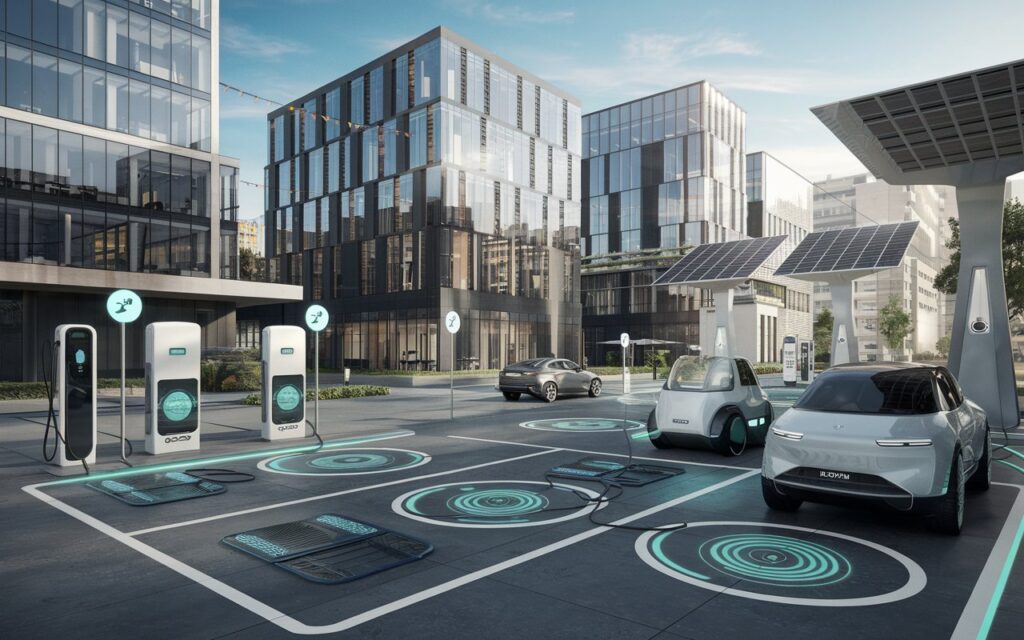
The future of EV infrastructure looks exciting with innovations like wireless charging and autonomous charging solutions. Additionally, vehicle-to-grid (V2G) technology is emerging, allowing EVs to return electricity to the grid, further enhancing energy management.
How to Advocate for Better EV Infrastructure Locally
Want more EV chargers in your area? Here’s how you can help:
- Petition your local government.
- Support businesses that install EV chargers.
- Educate others about the benefits of EVs and their infrastructure.
The Road Ahead: A Vision for EV Infrastructure by 2030
By 2030, the world could see a massive expansion in EV infrastructure, making EVs a practical choice for everyone. We’re on the cusp of a transportation revolution that’s cleaner, smarter, and more sustainable.
FAQs About EV Infrastructure
1. Can I charge an EV at home?
Yes, with a Level 1 or Level 2 charger, you can easily charge your EV at home.
2. How much does it cost to install a home charger?
Home charger installation can range from $500 to $2,000, depending on the charger type and electrical setup. Costs can vary significantly based on local labor rates and whether any upgrades to the home’s electrical system are necessary.
3. Are there enough charging stations for road trips?
The number of stations is growing, especially along highways. Apps like PlugShare can help you find chargers.
4. Can the grid handle all these EVs?
Upgrades are needed, but with smart grid technology, it’s possible to meet the demand.
5. Is solar power used for EV chargers?
Yes, solar-powered chargers are becoming more common, reducing costs and environmental impact.
6. How long does it take to charge an EV?
It depends on the charger type: Level 1 takes hours, Level 2 takes 4-6 hours, and DC fast chargers can do it in under an hour.

